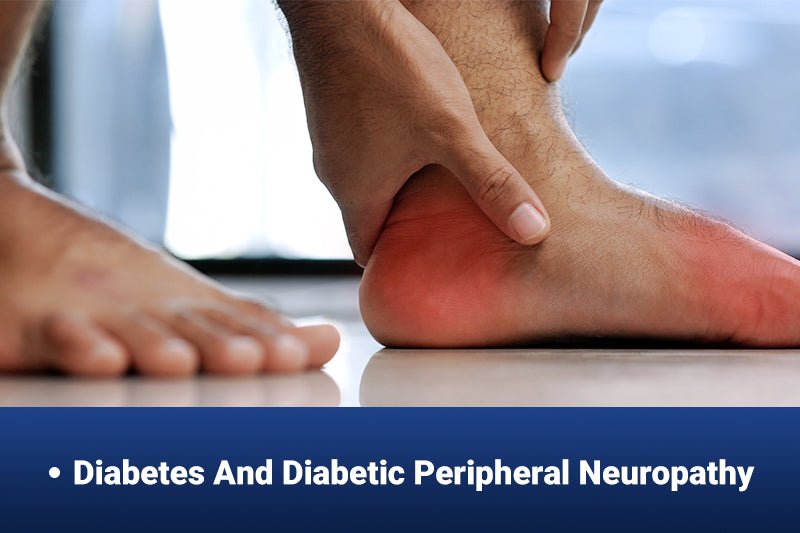What are Diabetes and Diabetic Peripheral Neuropathy?

DIABETES & DIABETIC PERIPHERAL NEUROPATHY
SYMPTOMS
Peripheral Neuropathy could include complications such as:
- Numbness or loss of ability to feel pain or changes in temperature
- Tingling, electrical sensations, prickling, allodynia, constricting, freezing or burning feeling
- Muscle weakness - Difficulty in physical movement
- Touch sensitivity
- Serious foot problems, such as ulcers, infections, and bone and joint damage
PREVENTION
Blood sugar management
Uncontrolled or unstable blood sugar level increases the chance of diabetes complications. According to ADA (American Diabetes Association), people with diabetes should take a Glycated Hemoglobin (A1C) twice a year, a test to measure the amount of glucose (sugar) in your blood. ADA suggests most adults should maintain their A1C level below 7%. Anything above that would require an adjustment of medication, physical activities and diet.
Healthy food consumption
A healthier lifestyle is vital for preventing or delaying the complications of Diabetic Peripheral Neuropathy. One should consume higher amount of fruits, vegetables, whole grains and lean protein to keep nerves healthy. Meats, fish, eggs and low-fat diary foods are food that could retain Vitamin B-12. fortified cereals. Fortified cereals are a great source of Vitamin B-12 for vegans.
Also, it’s crucial to maintain a healthy diet by avoiding sugar and saturated fat for better weight management.
Regular exercise
A body mass index (BMI) of 25 or more may increase the chance of diabetic neuropathy. A minimum of 30 minutes of Regular or moderate-intensity exercise should be included in your schedule on most days for weight management. Please seek for doctor’s advice before attempting exercise.
Nerve damaging activities
Avoid repetitive motions and cramped positions that might put overloading pressure on nerves.
You should keep away from Alcohol and Tobacco should be avoided as it would be damaging to nerves. Smoking narrows and hardens the arteries, reducing blood flow to the legs and feet which might lead to peripheral nerves damage.
In our next blog post, will be covering some of the tips of foot care for diabetic feet. Stay tuned.
About FitVille Footwear
Just Follow us on LinkedIn, Facebook, YouTube, Instagram, RSS feed and Pinterest to catch our brand news.
What FitViller Prefers
Best Shoes to Buy

Popular Men's Shoes

Popular Women's Shoes


































